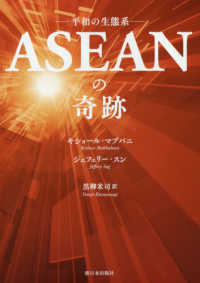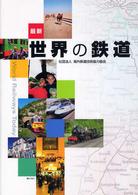- ホーム
- > 洋書
- > 英文書
- > Science / Mathematics
Full Description
Fatigue is a recognized problem in many facets of the human enterprise. It is not confined to any one area of activity but enters all situations in which humans have to perform for extended intervals of time. Most problematic are the circumstances in which obligatory action is continuous and the results of failure are evidently serious or even catastrophic. Therefore, the modern media especially highlights fatigue-related failures in industries such as transportation, materials processing and healthcare. It can be, and indeed is, no coincidence that most of the spectacular failures in process control that have resulted in the world's largest industrial accidents have occurred in the small hours of the morning when the circadian rhythm is lowest and operator fatigue itself peaks. While there have been legislative efforts made at state, federal and international levels to regulate working hours of employees, the appropriate implementation of such legislation is still a long way off. The Handbook of Operator Fatigue provides a comprehensive account of the subject to serve as the definitive reference work for researchers, students and practitioners alike. The volume features 30 chapters written by experts from around the world to address each important facet of fatigue, including: the scale of the fatigue problem (Section I), the nature of fatigue (Section II), how to assess fatigue (Section III), the impact of fatigue on health (Section IV), fatigue in the workplace (Section V), the neurological basis of fatigue (VI), sleep disorders (VII), and the design of countermeasures to fatigue (VIII).
Contents
Contents: Part I Introduction to Operator Fatigue: An overview of operator fatigue, Gerald Matthews, Paula A. Desmond, Catherine Neubauer and P.A. Hancock; An historical view of operator fatigue, James C. Miller; Challenges in fatigue and performance research, Bob Hockey. Part II The Nature of Fatigue: Conceptualizing and defining fatigue, P.A. Hancock, Paula A. Desmond and Gerald Matthews; Individual differences in stress, fatigue and performance, James L. Szalma; Task characteristics and fatigue, Phillip L. Ackerman, Charles Calderwood and Erin Marie Conklin; Fatigue in sports psychology, Timothy David Noakes. Part III Assessment of Fatigue: Approaches to the measurement of fatigue, Christopher Christodoulou; Dimensional models of fatigue, Gerald Matthews, Paula A. Desmond and Edward M. Hitchcock; Models of individual differences in fatigue for performance research, Gerald Matthews, P.A. Hancock and Paula A. Desmond. Part IV The Neuroscience of Fatigue: Neuroscience of sleep and circadian rhythms, Siobhan Banks, Melinda L. Jackson and Hans P.A. Van Dongen; The influence of fatigue on brain activity, Ashley Craig and Yvonne Tran; Cerebral hemodynamic indices of operator fatigue in vigilance, Joel S. Warm, Lloyd D. Tripp, Gerald Matthews and William S. Helton; Biochemical indices of fatigue for anti-fatigue strategies and products, Yasuyoshi Watanabe, Hirohiko Kuratsune and Osami Kajimoto. Part V Performance Effects of Sleep Loss and Circadian Rhythms: Socio-emotional and neurocognitive effects of sleep loss, William D.S. Killgore; Circadian rhythms and mental performance, Jim Waterhouse; Sleep loss and performance, Valerie J. Gawron. Part VI Fatigue and Health: Differentiating fatigue in chronic fatigue syndrome and psychiatric disorders, Leonard A. Jason, Molly Brown, Meredyth Evans and Abigail Brown; Chronic fatigue syndrome, Diane L. Cox; Upper respiratory tract illnesses and fatigue, Andrew P. Smith. Part VII Applied Contexts for Operator Fatigue: Long work hours, fatigue, safety, and health, Roger R. Rosa; Fatigue and road safety: identifying crash involvement and addressing the problem within a safe systems approach, R.F. Soames Job, Andrew Graham, Chika Sakashita and Julie Hatfield; Driver fatigue and safety: a transactional perspective, Catherine Neubauer, Gerald Matthews and Dyani J. Saxby; Understanding and managing fatigue in aviation, John A. Caldwell; Soldier fatigue and performance effectiveness: yesterday, today and tomorrow, Gerald P. Kreuger. Part VIII Operational Countermeasures: Adaptive automation for mitigation of hazardous states of awareness, Chad L. Stephens, Mark W. Scerbo and Alan T. Pope; Countermeasures for driver fatigue, Ann Williamson; Work scheduling, Philip Tucker and Simon Folkard; Avoiding the impact of fatigue on human effectiveness, Jonathan French and Kelly J. Neville; Model-based fatigue risk management, Hans P.A. Van Dongen and Gregory Belenky; Index.








